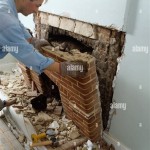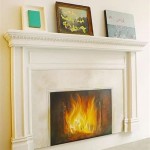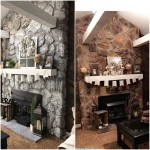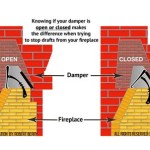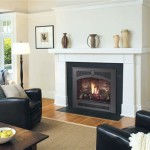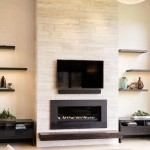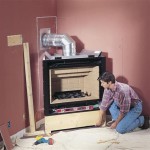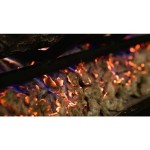Exploring Outside Fireplace Plans: Design, Construction, and Considerations
An outdoor fireplace can transform a backyard or patio into a cozy and inviting gathering space. Beyond providing warmth on cool evenings, it serves as an aesthetic focal point, enhancing the overall ambiance of an outdoor living area. Planning and constructing an outdoor fireplace requires careful consideration of various factors, from design and materials to local regulations and safety precautions. This article explores key aspects of outside fireplace plans, offering guidance on creating a functional and visually appealing outdoor feature.
Selecting the Right Fireplace Design
The design of an outdoor fireplace is a crucial determinant of its functionality and aesthetic appeal. Several design options are available, each with its own advantages and disadvantages. A traditional masonry fireplace, constructed from brick, stone, or concrete blocks, offers a classic and timeless look. These fireplaces are typically built-in, providing a permanent and substantial structure. Alternatively, prefabricated fireplace kits offer a more convenient and potentially cost-effective solution. These kits include pre-cut or pre-assembled components, simplifying the construction process. A third option involves constructing a customized fireplace using a combination of materials and design features. This approach offers the greatest flexibility in terms of aesthetics and functionality, allowing for the incorporation of elements such as built-in seating, storage compartments, or cooking surfaces.
When selecting a design, it is important to consider the available space, the desired style, and the intended use of the fireplace. A large, elaborate fireplace may be suitable for a spacious backyard, while a smaller, more compact design may be more appropriate for a patio or deck. The style of the fireplace should complement the existing architecture and landscaping of the outdoor area. For example, a rustic stone fireplace may be well-suited for a naturalistic setting, while a modern brick fireplace may be more appropriate for a contemporary design.
The intended use of the fireplace will also influence the design choices. If the fireplace is primarily intended for providing warmth and ambiance, a simple design with a large firebox may be sufficient. If the fireplace is intended for cooking, features such as a grill, rotisserie, or pizza oven may be incorporated into the design. Consideration should also be given to the type of fuel that will be used. Wood-burning fireplaces require a chimney and adequate ventilation, while gas-burning fireplaces may require a gas line connection. Understanding these factors early on will help narrow down the design options and ensure that the final product meets the specific needs and preferences of the homeowner.
Material Selection and Construction Considerations
The selection of materials for an outdoor fireplace is critical to its durability, aesthetics, and overall performance. Brick, stone, concrete blocks, and stucco are common materials used in fireplace construction. Brick offers a classic and durable option, available in a wide range of colors and textures. Stone provides a natural and visually appealing look, blending seamlessly with the surrounding landscape. Concrete blocks offer a cost-effective and versatile option, suitable for both traditional and modern designs. Stucco can be applied over a concrete block or brick structure, providing a smooth and customizable finish.
In addition to the primary construction materials, fire-resistant materials are essential for the firebox and chimney. Firebrick, a heat-resistant clay brick, is commonly used to line the firebox, protecting the surrounding structure from extreme temperatures. Refractory mortar, a specialized mortar designed to withstand high heat, is used to bind the firebrick together. The chimney should be constructed from materials that are resistant to both heat and weathering, such as stainless steel or reinforced concrete.
Proper construction techniques are essential for ensuring the structural integrity and safety of the fireplace. A solid foundation is crucial for preventing settling and cracking. The foundation should be constructed of concrete and extend below the frost line in colder climates. The fireplace structure should be built according to local building codes and regulations, ensuring that it meets safety standards for fire resistance, ventilation, and stability. Professional assistance may be required for complex designs or when dealing with gas line connections. Proper ventilation is also crucial for ensuring efficient combustion and preventing the build-up of carbon monoxide. The chimney should be properly sized and constructed to provide adequate draft, drawing smoke and gases away from the living area.
Safety Regulations and Permits
Constructing an outdoor fireplace often requires obtaining permits from the local building department. These permits ensure that the fireplace complies with safety regulations and zoning ordinances. Before commencing any construction, it is essential to contact the local building department to determine the specific requirements for outdoor fireplaces. Regulations may vary depending on the location and the type of fireplace being constructed.
Safety regulations typically address issues such as setback distances from property lines, chimney height requirements, and fire prevention measures. Setback distances dictate how far the fireplace must be located from neighboring properties and structures, minimizing the risk of fire hazards. Chimney height requirements ensure adequate draft and prevent smoke from entering nearby buildings. Fire prevention measures may include the use of spark arrestors on chimneys, the installation of fire extinguishers, and the maintenance of a clear area around the fireplace.
In addition to building permits, gas-burning fireplaces may require permits for gas line installation. These permits ensure that the gas line is installed by a qualified professional and that it meets safety standards for pressure testing and leak detection. It is crucial to comply with all applicable regulations to avoid fines, delays, and potential safety hazards. Engaging a qualified contractor who is familiar with local building codes and regulations can help ensure that the fireplace is constructed safely and legally. Regular maintenance and inspections are also essential for maintaining the safety and efficiency of the fireplace over time. This includes cleaning the chimney regularly to remove creosote buildup, inspecting the firebox for cracks or damage, and ensuring that all gas line connections are secure.

Outdoor Fireplace Design Ideas Getting Cozy With 10 Designs Unilock

Saguaro Diy Outdoor Fireplace Plan

Outdoor Fireplace Plans
:max_bytes(150000):strip_icc()/chrisjulia-971f3f9eb708447bbd364fc7f4a16280.jpg?strip=all)
10 Free Outdoor Fireplace Construction Plans

Pima Diy Outdoor Fireplace Plan

Diy Outdoor Fireplace Ideas

53 Most Amazing Outdoor Fireplace Designs Ever
:max_bytes(150000):strip_icc()/livingstonemasonary-154847150f2a49558b21b5a93d08dfc9.jpg?strip=all)
10 Free Outdoor Fireplace Construction Plans

Fireplace Plans

Best Outdoor Fireplace Design Ideas Cad Pro

